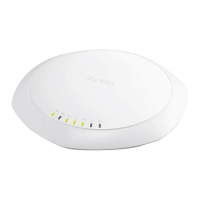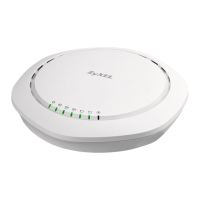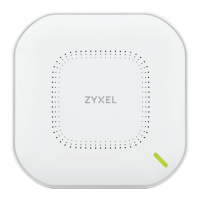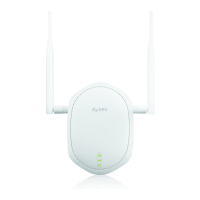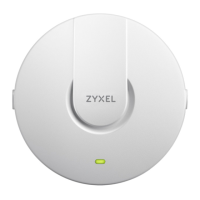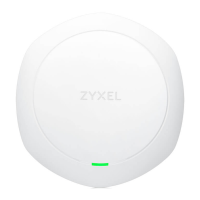Appendix E Wireless LANs
NWA1120 Series User’s Guide
192
Wireless Security Overview
Wireless security is vital to your network to protect wireless communication between wireless
clients, access points and the wired network.
Wireless security methods available on the NWA are data encryption, wireless client authentication,
restricting access by device MAC address and hiding the NWA identity.
The following figure shows the relative effectiveness of these wireless security methods available on
your NWA.
Note: You must enable the same wireless security settings on the NWA and on all wireless
clients that you want to associate with it.
IEEE 802.1x
In June 2001, the IEEE 802.1x standard was designed to extend the features of IEEE 802.11 to
support extended authentication as well as providing additional accounting and control features. It
is supported by Windows XP and a number of network devices. Some advantages of IEEE 802.1x
are:
• User based identification that allows for roaming.
• Support for RADIUS (Remote Authentication Dial In User Service, RFC 2138, 2139) for
centralized user profile and accounting management on a network RADIUS server.
• Support for EAP (Extensible Authentication Protocol, RFC 2486) that allows additional
authentication methods to be deployed with no changes to the access point or the wireless
clients.
IEEE 802.11a
54 Mbps 5 GHz IEEE 802.11n
IEEE 802.11n 300 Mbps 2.4 GHz, 5 GHz
IEEE 802.11b
IEEE 802.11g
IEEE 802.11a
Table 55 Wireless LAN Standards Comparison Table
WIRELESS LAN
STANDARD
MAXIMUM NET
DATA RATE
FREQUENCY
BAND
COMPATIBILITY
Table 56 Wireless Security Levels
SECURITY
LEVEL
SECURITY TYPE
Least
Secure
Most Secure
Unique SSID (Default)
Unique SSID with Hide SSID Enabled
MAC Address Filtering
WEP Encryption
IEEE802.1x EAP with RADIUS Server Authentication
Wi-Fi Protected Access (WPA)
WPA2

